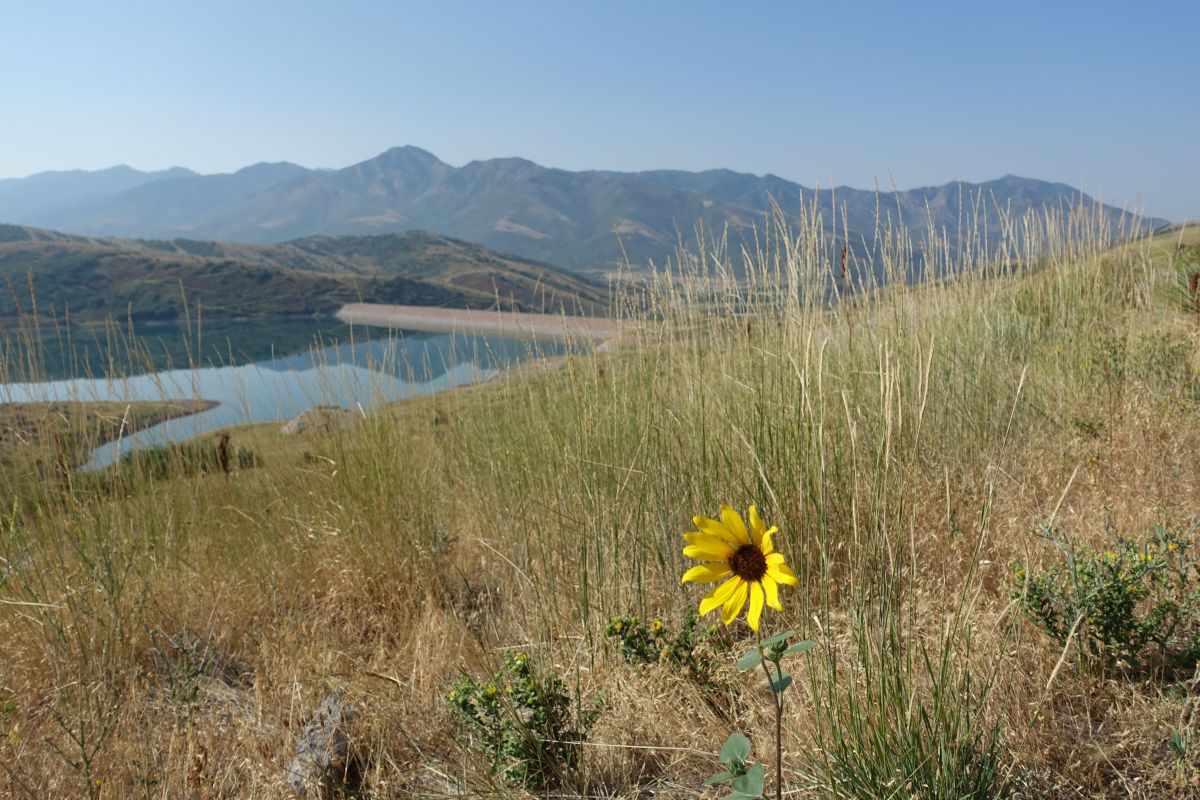Hours before the pros took to the 157-km route of Stage 5 of the Tour of Utah, I along with more than 500 other cyclists rode the scenic and challenging course in the Ultimate Challenge. The Challenge, a gran linked with the level 2.HC UCI stage race, left from Canyons Village in Park City, Utah. Its course meandered through some very rolling back roads before the route’s bigger challenges began. Volunteers handed out an assortment of nutrition to keep the legs turning before the road took us back toward Park City and the slopes of Guardsman Pass where we were greeted by some imposingly steep gradients.

Following a descent, we hit one of Utah’s most well known climbs. The road up to Snowbird is often likened to Alpe d’Huez though the formers seven per cent gradient over 10 km is slightly easier and shorter but no less a challenge for a fondo rider. Another major difference is that the road up to the Utah resort is mostly straight with no hairpin turns. As you make your way up the canyon you see the landscape change from the semi-arid valley floor of the Wasatch Front region, which includes Salt Lake City, at roughly 1,500 m to 2,469 m where spruce, fir, aspen and oak trees dominate.

Spectators lined the climb cheering and providing handouts to the gran fondo riders. I enjoyed a couple of Twizzlers and a quarter of a glazed doughnut. The bacon I was offered wouldn’t have gone down so well in the mid-afternoon heat. By the time the pros arrived, the crowd had further swelled giving the climb a great race atmosphere.
I got to the finish line a couple hours before the pros. I was spent from the hard ride. I had just enough time to take a dip in a refreshing stream, grab a bite to eat and change into fresh clothes before watching the all-conquering Sepp Kuss storm up the mountain. The crowd that had gathered was thrilled to be cheering on the Colorado-native to a dominant victory.
Post Challenge

After the Challenge, you can still find a lot of great riding in the region. All along the Wasatch Front, there are big climbs for cyclists to explore. Emigration Pass right out of Salt Lake City, Mount Nebo to the south, Guardsman Pass out of Park City, and Big and Little Cottonwood Canyon are all bucket-list ascents giving varied riding options to a cyclo-tourist.
A lot of the state is at altitude so riding here for an extended period of time may come with some marginal fitness benefits. That elevation helps explain why Peter Sagan owns a training base in the mountains outside of Park City.
Going beyond the Challenge

One of the best rides during my visit in Utah was along scenic Route 12. At the Head of the Rocks Overlook, we stopped for 15 minutes to admire the view and take photos. We rode the route between the towns of Escalante and Boulder. There is no shortage of canyons, rock formations and landscape here. Route 12 runs from Panguitch to Torrey and is about a three and a half hour drive south of Salt Lake City.
The route passes through Bryce Canyon National Park and ends right near the entrance of Capitol Reef National Park. The biggest obstacle along the route, which was used in the 2013 Tour of Utah, is Boulder Mountain. The climb from Escalante is a 23.50-km ascent that averages four per cent and peaks just below 3,000 m above sea level. The road begins climbing in the red rock desert landscape and runs through Dixie National Forest with its wild untouched landscape.

When you head east from Torrey, past Capitol Reef, something amazing happens. The red rock landscape suddenly turns into a white dusty moonscape. It’s a sudden and stunning transition. Farther to the east of Torrey is Moab. The world-famous mountain biking destination has two national parks that are beautiful to ride through. Arches National Park has rock spires that tower over the red desert and impossible rock arches can be spotted in the outcrops. Canyonlands National Park and Dead Horse Point State Park offer canyon views.
